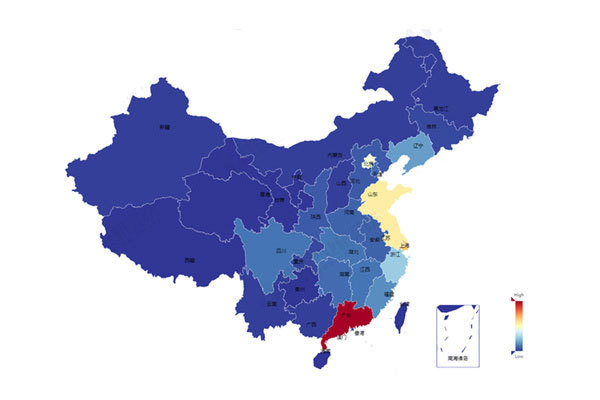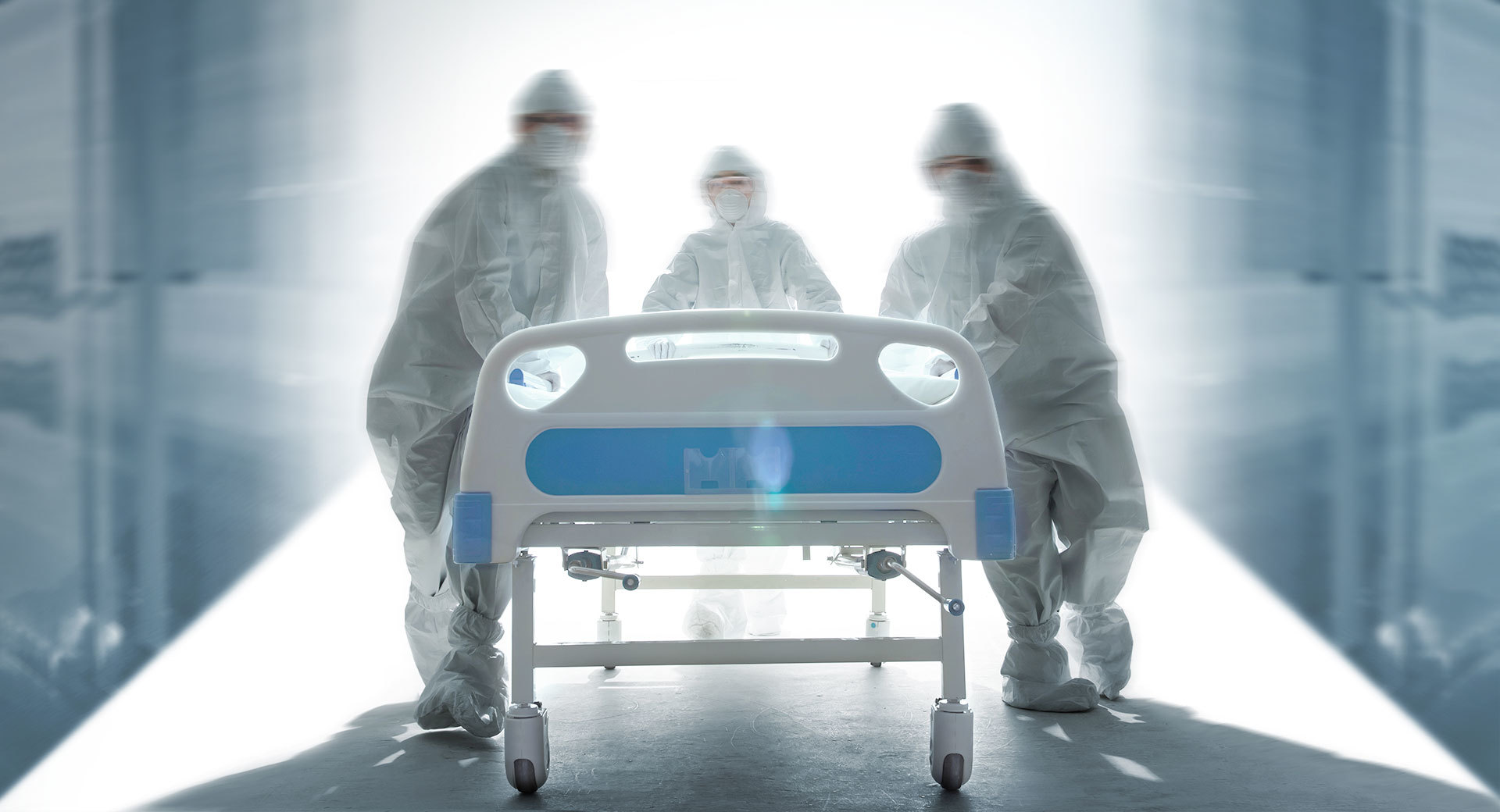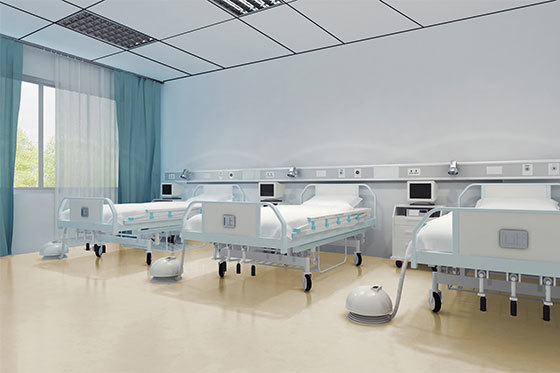News Center
2022-11-03
In depth research report on mobile medical device industry
Report summary
Mobile medical devices refer to devices and/or software that use non-invasive mobile computing terminals to achieve one or more medical purposes. Mobile computing terminals refer to mobile computing technology product terminals for personal use, including general (commercial off the shelf) terminals and special (self-made medical) terminals, which can be used in handheld (such as tablet computers, portable computers, smart phones, etc.), wearable (such as smart glasses, smart watches, etc.) and hybrid (combination of handheld and wearable) forms.
Driven by technology and terminal demand, the market size of the mobile medical device industry has grown steadily. According to sales statistics, the market size of China's mobile medical device industry increased from 21.39 billion yuan to 48.46 billion yuan in 2015-2019, with a compound annual growth rate of 22.7%. From 2019 to 2024, the market size of China's mobile medical device industry will continue to grow at a compound annual growth rate of 27.3%. It is estimated that the market size will reach 162.02 billion yuan in 2024. The market scale of China's mobile medical device industry continues to expand, mainly driven by three factors: the gradual maturity of software technology, the continuous upgrading of hardware products, and the high demand for terminals.
Software technology and hardware products have made common progress to promote the performance of mobile medical devices
Cloud computing, network security and other software technologies are gradually mature. Among them, cloud computing has the advantages of reducing information costs, reducing duplication of construction, improving resource utilization, increasing business flexibility, and improving service professionalism. Combining with mobile medical devices can reduce digital costs and improve the level of intelligence; Mobile medical devices usually have network connection function for electronic data exchange or remote control, which has network security risk. The progress of cloud computing and network security technology is of great significance for improving the intelligent level and security of mobile medical devices. The display screen, battery and other important accessories are developing rapidly, and the deepening of flexible display screen, lithium battery and other applications is conducive to the improvement of the performance indicators of mobile medical devices.
The market demand inside and outside the hospital remains high, and the development space of mobile medical devices is broad
Mobile medical devices are small, mobile, contain medical device software or are independent software, so they have wider application scope and wider development space than traditional medical devices. On the one hand, mobile medical devices are used in more departments and more scenarios in hospitals. On the other hand, mobile medical devices are suitable for primary medical care and out of hospital medical care, both of which are driven by national policies to develop better, promoting the continuous expansion of the mobile medical device industry.
The advantages of mobile medical devices are prominent, and the application of medical big data is deepened
Mobile medical devices have three major advantages in data collection, management and application: standardized data collection, centralized data management, and data networking applications. Medical big data is the basis for realizing "Internet plus medical". Therefore, mobile medical device manufacturers can make profits by relying on a large number of high-quality data obtained in the use of products, and will also promote the deepening of medical big data applications.
Part I: China Mobile Medical Device Industry Market Overview
1. Definition, type and judgment principle
There is no clear demarcation line between mobile medical devices and mobile health electronic products. Any mobile computing device or software that meets the definition of medical devices belongs to mobile medical devices.
Definition: According to the Guiding Principles for Technical Review of Mobile Medical Device Registration issued by CFDA in December 2017, mobile medical devices refer to devices and/or software that use non-invasive mobile computing terminals to achieve one or more medical purposes. Mobile computing terminals refer to mobile computing technology product terminals for personal use, including general (commercial off the shelf) terminals and special (self-made medical) terminals, which can be used in handheld (such as tablet computers, portable computers, smart phones, etc.), wearable (such as smart glasses, smart watches, etc.) and hybrid (combination of handheld and wearable) forms. Mobile medical devices contain medical device software or are independent software. Mobile and wearable medical devices without medical device software do not belong to mobile medical devices.
Type: Mobile medical devices can be divided into three categories: mobile medical devices, mobile independent software, and mobile medical accessories.
Judgment principle: there is no clear demarcation line between mobile medical devices and mobile health electronic products. Any mobile computing device or software that meets the definition of medical devices belongs to mobile medical devices.
(1) The mobile computing equipment or software intended for health management, whose target population is a healthy population, and which records statistical health information are not medical devices and do not belong to mobile medical devices;
(2) The mobile computing equipment or software intended for disease management, targeted at medical staff and patients, controlling and driving medical devices, and processing, analyzing and monitoring medical data/images have medical purposes and belong to mobile medical devices.
2. Product technical requirements
Mobile medical devices not only need to achieve the level of equivalent traditional medical devices in terms of performance indicators, but also have strict technical requirements in terms of network security capabilities, display performance, ambient light anti-interference capabilities, battery performance, cloud computing service capabilities, etc.
Mobile medical devices should not only meet the technical level of conventional medical devices in terms of performance indicators, but also meet certain technical requirements in terms of network security capabilities, display performance, ambient light anti-interference capabilities, battery performance, cloud computing service capabilities, etc. before they can be applied to clinical beds.
Technical requirements for mobile medical devices
3. Representative product introduction
Mobile medical devices involve a wide range of fields and products. The representative manufacturers of various products are different. There is no leading enterprise covering all fields in the industry.
Mobile medical devices cover a wide range of products. At present, typical mobile medical devices in the market include: intelligent cloud blood pressure monitoring system, intelligent cloud blood glucose monitoring system, intelligent cloud ECG monitoring system, mobile DR, intelligent temperature monitoring, chronic disease management platform and telemedicine platform. All kinds of products have different main manufacturers, and there is no leading enterprise covering all fields.
4. Analysis on the advantages of representative products
The patient side mobile medical device has the functions of long-term continuous data recording, access to complete past data and remote monitoring; The doctors' mobile medical devices have broken the restrictions of departments and medical institutions, making patients become medical service centers.
Mobile medical equipment (patient side): taking the intelligent cloud blood pressure monitoring system as an example, the wireless Bluetooth data transmission function is added on the basis of the traditional blood pressure monitor, which can synchronously transmit the monitoring data to the mobile phone, and visually display the blood pressure changes in the form of a chart. For patients, the intelligent cloud blood pressure monitoring system can continuously record blood pressure data for a long time, and give timely warning according to blood pressure changes, which is helpful for disease recovery and prevention; For doctors, the complete blood pressure data of patients in the past can be consulted during diagnosis, which can effectively improve the rate of disease diagnosis; For the family members of patients, they can remotely monitor the blood pressure of patients to achieve remote care beyond space.
Mobile medical equipment (doctor side): Taking mobile DR as an example, it is smaller and mobile than traditional DR. On the one hand, mobile DR breaks the limitation of departments and can cooperate with patients' needs to move between multiple departments such as radiology, ICU, obstetrics and gynecology, orthopedics, and emergency; On the other hand, mobile DR breaks the limits of medical institutions and can provide diagnostic services for patients in different scenarios, such as ambulances, fields and families. Mobile DR enables patients to truly become the center of medical services. Patients (especially those with severe diseases) do not need to move back and forth to accommodate medical equipment. Mobile DR can switch places of use according to the needs of patients. It is an important product to improve the quality of medical services.
The patient mobile independent software can achieve full coverage before, during and after diagnosis, helping to improve the patient's medical experience; The doctor mobile independent software can help doctors improve their medical level.
Mobile independent software (the affected side): chronic disease management refers to organizing chronic disease professionals, pharmacists and nursing staff to build an integrated chronic disease course intervention and management mechanism through the three links of pre diagnosis, diagnosis and post diagnosis, so as to provide comprehensive, continuous and active management for patients with chronic diseases, so as to promote health, delay the process of chronic diseases, reduce complications, reduce disability rate, and extend life It is a scientific management mode to improve the quality of life and reduce medical expenses. The chronic disease management platform can achieve full coverage of the three links before, during and after diagnosis, and effectively improve the efficiency of chronic disease management through continuous tracking to improve patient compliance.
Mobile independent software (doctor side): Take the telemedicine platform (doctor side) as an example, mostly in the form of software or APP. On the one hand, it has built a platform for doctors to communicate with patients and other doctors, which can remotely manage patients, assist patients in accelerating their recovery, and at the same time strengthen academic exchanges among excellent doctors to help doctors improve their professional level. On the other hand, the telemedicine platform can become an auxiliary medical tool to help doctors achieve automatic analysis, and provide doctors with a cutting-edge and comprehensive knowledge base and database, which can be freely accessed by doctors according to their diagnosis and treatment needs, so as to better serve patients.
5. Industrial chain analysis
At present, China's mobile medical device industry has not formed a mature industrial chain, and the main participants include medical device manufacturers, software manufacturers and accessory manufacturers.
The industrial chain of China Mobile medical device industry is divided into three links. The upstream participants in the industrial chain are raw material suppliers, including hardware suppliers and software suppliers such as core parts and accessories; The main participants in the middle reaches of the industrial chain are mobile medical device manufacturers, including device manufacturers and software manufacturers; The downstream of the industrial chain includes sales channels and application terminals.
6. Upstream analysis of industrial chain
The high price of core parts and components, the highest proportion of costs, and the low price of accessories and software are the key factors affecting the performance of mobile medical devices and realizing the "movable" attribute.
In addition to mobile independent software, the cost of core components is still the largest among the raw materials of other mobile medical devices. For example, the cost of core components such as X-ray bulb tube and flat panel detector of mobile DR can account for 55% or more. The price of other accessories is relatively low, with the overall cost accounting for about 30% - 35%, but it has a great impact on the final performance of mobile medical devices. The price of software is also low, accounting for less than 10% of the overall cost, but it is the key to achieve the "movable" attribute of medical devices.
Core parts: The performance of core parts determines the technical height of mobile medical devices. At present, most medical device manufacturers in China do not have the independent R&D and production capacity of core components, so they need to purchase from other manufacturers for complete machine assembly. Manufacturers with core parts supply capacity have strong bargaining power.
Other accessories: accessories manufacturers are concentrated in the Yangtze River Delta, the Pearl River Delta and other places, with no obvious leading enterprises, numerous market participants and weak bargaining power.
Software: Software manufacturers are concentrated in Guangdong, Fujian, Zhejiang, Beijing Tianjin Hebei and other regions. At this stage, mature industries have been formed, with many market participants, no obvious leading enterprises, and limited bargaining power.
7. Analysis of the midstream of the industrial chain
The market participants in the middle reaches of the industrial chain include hardware manufacturers and software manufacturers, both of which have no obvious leading enterprises at present. In the future, with the joining of technology giants, software giants will gradually emerge.
Mobile medical device manufacturers include hardware manufacturers and software manufacturers. They not only independently develop and sell mobile medical device products, but also cooperate in the development of new products and new business models.
Related News







